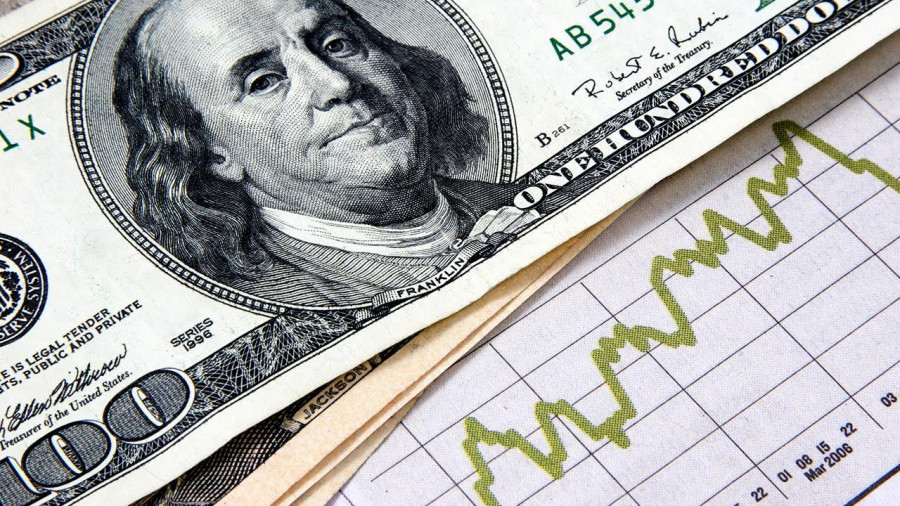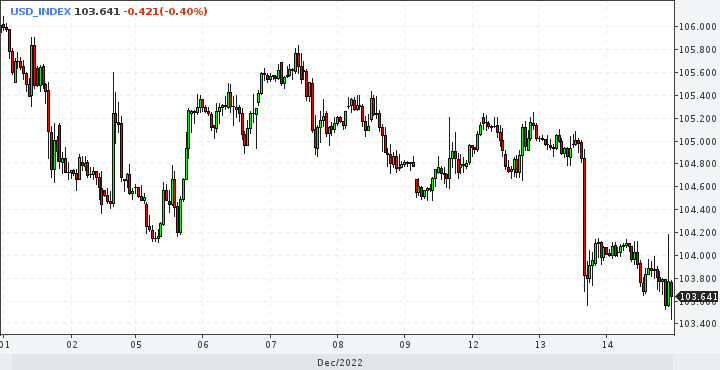

Investors and traders finally waited for the Federal Reserve's verdict, but it was not what they imagined. The pace of rate hikes has indeed slowed, but the dot plot has market players worried.
The Fed was expected to raise rates by 50 bps, but policymakers raised their projections for the expected level of interest rates at the end of the hike cycle in 2023.
Policymakers projected rates would end next year at 5.1%, up from the 4.6% announced in September.
Only two of 19 Fed officials saw the benchmark overnight interest rate staying below 5% next year. So they still see the need to continue to fight inflation, which has reached a 40-year high.
The market's initial reaction was not massive, yet it was noticeable that markets caught the hawkish tone of the Fed.
The dollar reacted by rising immediately after this was announced. The index momentarily jumped above 104.00 and the euro fell below 1.0650.
Meanwhile, the euro stays on top. On Thursday, euro traders are waiting for a similar verdict from the European Central Bank. Despite some early evidence that inflation in the region is slowing, it remains uncomfortably high for officials. The ECB remains committed to raising rates to keep prices from rising. At the same time, investors expect it to raise the rate by 50 bps, despite concerns about the impending recession.
The changes in the dot plot was not the only thing that was surprising. The Fed also said that core inflation will remain elevated, rising 3.5% in 2023 from the previous forecast of 3.1% in September, which in itself is a signal of the need for additional hikes.
The rate will remain above the Fed's 2% target until at least the end of 2025, and will still be above 3% by the end of next year.
The median projected unemployment rate is seen rising to 4.6% over the next year from the current 3.7%, an increase that exceeds the level historically associated with the recession.
Gross domestic product is seen growing by just 0.5% next year, the same as estimated for 2022, before rising to 1.6% in 2024 and 1.8% in 2025.
Since the overall forecast was lowered to 0.5%, some officials do not rule out negative GDP growth in 2023.
In general, the Fed's current statement and economic forecasts speak simply, but convincingly. The central bank is not ready for the pivot that the markets have been hoping for lately. Stable and convincing evidence of a reversal of inflation is needed.
"Renewed optimism in global markets – in large part tied to hopes for a Fed "pivot" – pushed the US dollar down against most major currencies last month. But with a global recession on the horizon, we continue to think that the dollar rally will resume as "safe-haven" demand intensifies in the coming months" Capital Economics believe.
And yet the US currency is in a short-term downtrend. Inflation indicators hint that it has passed the peak, and the Fed has slowed the pace of rate hikes. This is a fact.
The information available at the moment confirms that the rate cut will occur in 2024.
In 2023, the dollar is likely to continue to weaken. This will happen if, as is widely expected, the Fed begins to wind down its tight policy in the second part of the year at a faster pace than other central banks.
You have already liked this post today
*这里的市场分析是为了增加您对市场的了解,而不是给出交易的指示。



Your IP address shows that you are currently located in the USA. If you are a resident of the United States, you are prohibited from using the services of InstaFintech Group including online trading, online transfers, deposit/withdrawal of funds, etc.
If you think you are seeing this message by mistake and your location is not the US, kindly proceed to the website. Otherwise, you must leave the website in order to comply with government restrictions.
Why does your IP address show your location as the USA?
Please confirm whether you are a US resident or not by clicking the relevant button below. If you choose the wrong option, being a US resident, you will not be able to open an account with InstaTrade anyway.
We are sorry for any inconvenience caused by this message.


